By Brent T. Frei
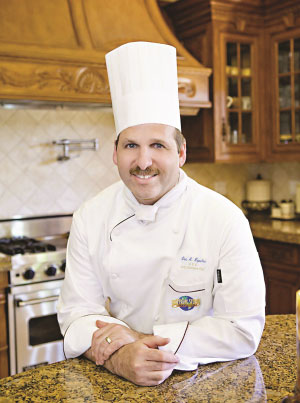 At Universal Studios in California, Eric Kopelow operates as if park guests are there for the food, not the fantasy.
At Universal Studios in California, Eric Kopelow operates as if park guests are there for the food, not the fantasy.
Eric A. Kopelow is no stranger to cooking for a crowd. As executive chef and vice president of food operations for NBC/Universal Studios Hollywood in Southern California, he oversees 120 cooks and bakers and meal preparation for more than 25,000 park visitors and up to 4,000 employees daily.
When he was 12, like millions of Americans at the time, Kopelow would watch, rapt, as a black-and-white Julia Child souffléd her way into his home via public television. He grew up, enrolled in The Culinary Institute of America, and graduated with his AOS degree in 1980.
Since then, Kopelow has served as corporate chef of United Airlines and manned kitchens at Trump Castle Hotel Casino in Atlantic City and the Hilton Washington in Washington, D.C. He’s hosted two dinners at the James Beard House in New York. In 2000, he returned to his alma mater to have his handprints cast in cement to join those of Graham Kerr, Martin Yan and other culinary luminaries as part of the CIA’s Great Chefs series. Kopelow was the 73rd chef to be so honored, and today his handprints reside in the Danny Kaye Theater along with those of the doyenne of cooking who set him on his journey, Julia Child.

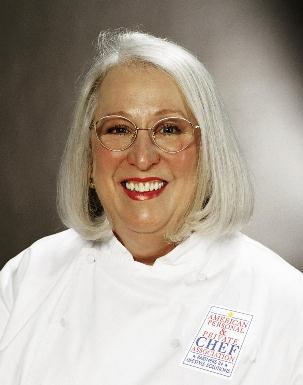 Candy Wallace, founder and executive director of the American Personal & Private Chef Association (APPCA), has accepted the invitation to serve on the culinary Program Advisory Committee of The Art Institute of California-San Diego for a one-year term.
Candy Wallace, founder and executive director of the American Personal & Private Chef Association (APPCA), has accepted the invitation to serve on the culinary Program Advisory Committee of The Art Institute of California-San Diego for a one-year term.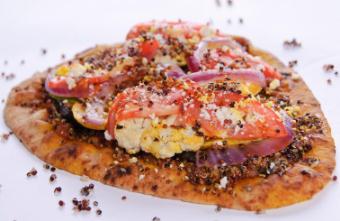 Though baking comes with its own rigors and rules, learning international breads expands students’ repertoire and deepens the learning experience.
Though baking comes with its own rigors and rules, learning international breads expands students’ repertoire and deepens the learning experience.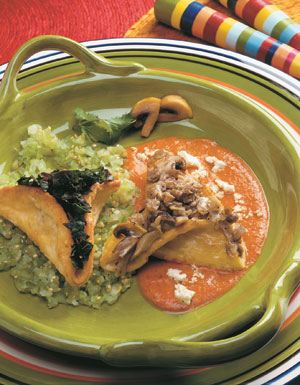 Mushrooms are the hidden treasure of healthy Hispanic dishes.
Mushrooms are the hidden treasure of healthy Hispanic dishes. Ever-evolving mindsets drive new flavor pairings for foodservice professionals now and for years to come.
Ever-evolving mindsets drive new flavor pairings for foodservice professionals now and for years to come.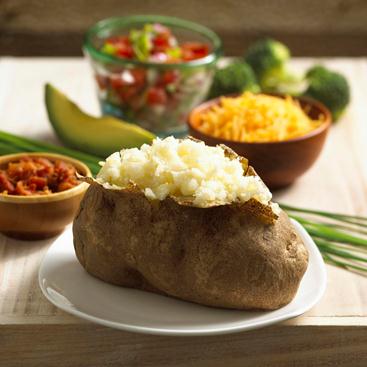 A recent study confirms that potatoes do not contribute to weight gain.
A recent study confirms that potatoes do not contribute to weight gain. At Universal Studios in California, Eric Kopelow operates as if park guests are there for the food, not the fantasy.
At Universal Studios in California, Eric Kopelow operates as if park guests are there for the food, not the fantasy. In a large class, it can become very easy for us to lecture and not invite questions or discussion. Here’s how to engage all students.
In a large class, it can become very easy for us to lecture and not invite questions or discussion. Here’s how to engage all students. Hosting meetings where food and beverages are the stars can provide great learning opportunities for students.
Hosting meetings where food and beverages are the stars can provide great learning opportunities for students.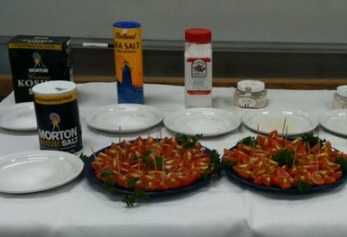 Teaching the vast range of salts helps students in product-identification, nutrition and many other classes.
Teaching the vast range of salts helps students in product-identification, nutrition and many other classes.